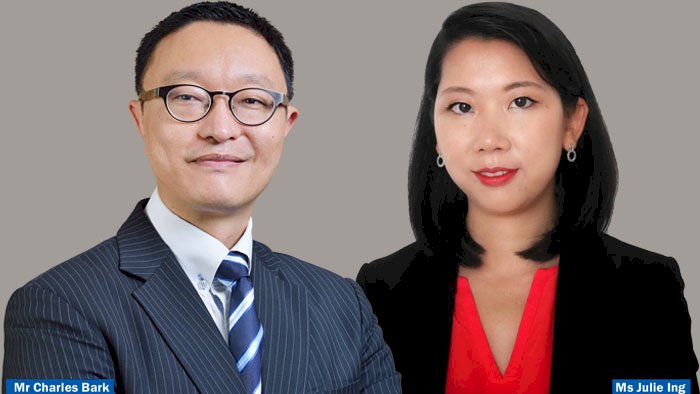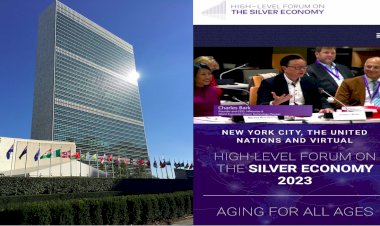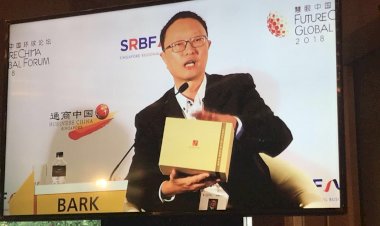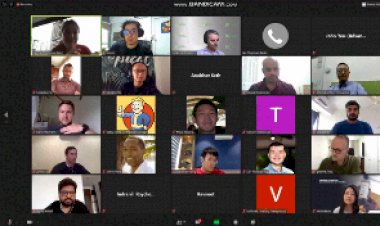HiNounou CEO and AXA Partners (Singapore) CEO Julie Ing interviewed by Asia Insurance Review

Ecosystems: The new insurance gameplay?
Wednesday, October 10, 2018 — HiNounou Intelligent Robot Company CEO and founder Charles Bark and AXA Partners (Singapore) CEO Julie Ing were interviewed by the journalist of Asia Insurance Review Dawn Sit.
The need for the insurance industry to step up its customer engagement game has led insurers increasingly to pursue partnerships with third parties and InsurTechs to develop more robust offerings. HiNounou Intelligent Robot Company CEO and founder Charles Bark and AXA Partners (Singapore) CEO Julie Ing shed light on the emergence of the ecosystem trend as they elaborate on insurance-as-a-service solution for China’s elderly.
By Dawn Sit
Born of a motivation to ensure that he is able to monitor the health and take care of his ageing mother who lives away from him, HiNounou founder Charles Bark developed a platform solution – powered by AI, IoT, blockchain and genomics – and set out on a mission to empower the elderly to live “longer, healthier, and happier at home”.
Enter AXA Partners China and Ping An Insurance to the collaborative mix – and the result is a foundation of a health insurance ecosystem, a budding trend in the evolution of life and health insurance propositions. In line with its strategic direction, AXA Partners is always looking at delivering superior customer experiences and constantly innovating to enhance its service delivery. Specifically in this case, AXA Partners China will provide a dedicated 24/7 teleconsultation hotline that allows users access to its network of medical professionals, while Ping An will provide accident and death cover to seniors up to the age of 100 without any underwriting.
HiNounou’s solution – which is offered as a subscription service to family of the elderly – comes in a pack comprising a DNA test kit and connected devices that are used to collect specific genomic information and daily measurements of five bio-markers respectively, from elderly users. This data, which Mr Bark noted is usually not available to individuals, researchers, healthcare providers and the like, could provide plentiful insights into helping prevent chronic diseases.
With such crucial health data to be accessed, it comes as no surprise that insurers would make a beeline to work with the InsurTech. But AXA Partners (Singapore) CEO Julie Ing noted that the data being collected remains proprietary to the users and that the insurer would only have access to users’ claims data under the collaboration.
Inclusion – not exclusion – is the main goal
Nonetheless, there is still the possibility of monetising such data for insurers, which could potentially pose adverse selection issues, right?
“I don’t think discrimination is the purpose here. It’s more about how we can solve the issue of chronic diseases and identify more preventative measures for the future. And I think insurers like AXA, and governments for that matter, would be interested. Because if we can help the population be healthier by proactively giving them information through the HiNounou platform, then we can start to prevent some of these issues over time,” Mr Bark said.
He added, “Data that are collected are blockchained to ensure maximum security, better distribution of information and generated utility tokens will reward and empower seniors to be healthier.”
“From a corporate perspective, our purpose is to empower people to live a better life. When people are living better lives, it also means that they would less likely seek medical attention. In a way, it’s also helping society, in terms of bringing healthcare costs down since you don’t have to spend as much money to cure – instead you’re preventing,” Ms Ing noted.
Both Mr Bark and Ms Ing highlighted that the core purpose of such data being collected and analysed is to reduce information asymmetry and to allow insurers to move in the direction of dynamic pricing for insurance cover. “It’s not exclusion, but inclusion,” he said.
Cultivating touch points
The other major impetus for insurers like AXA to embark on the ecosystem play, Ms Ing shared, is the recognition that it needs to seek out more opportunities to engage with customers. “We want to shift from being a payer to a partner. We don’t just want to be paying claims, we want actually to accompany customers on their health journey and to be there from the start – and for that we need regular touch points.”
Thus, through partnerships with tech start-ups like HiNounou, the insurer is able to play a more active role in that customers’ journey, getting more engaged with them, and “actively participating in the prevention part”.
Insurance ecosystems built on tech needed
Looking ahead, both leaders foresee such collaborations and ecosystem developments becoming more commonplace in the insurance industry.
On the InsurTech’s part, while optimistic about the market outlook for a solution like HiNounou’s, Mr Bark said he “definitely expects” more competition coming in – because although people are living longer, it doesn’t mean they are living healthier. Add to that the rising trend of urban migration. Sixty percent of seniors in China live alone as their children move away for studies or work. This, he said, poses a “serious problem of how we take care of our parents.”
Ms Ing agreed, noting the recent spotlight on ageing and healthcare issues in Singapore as well. With one in four expected to be over 65 years old by 2030, burgeoning healthcare costs, a lack of manpower and facilities in the city-state, tech and insurance ecosystems will be the way to go.
“We really need this tech to come into the picture being it in-house or through partnerships like this one with HiNounou so that people can be empowered to take care of themselves at home instead of always having to visit a doctor or hospital every time. We will see a lot more players in this market for sure,and competition to a certain extent drives us to constantly improve the products and services we deliver,” she said.
Mr Bark also described it as an “intervention” – providing more information, creating awareness and helping understanding – to an end goal that is happiness and customer satisfaction. That, and cost reduction, which tends to be the top issue when it comes to elderly care. It’s predictable mathematics when it comes to ageing demographic trends and insurers “know exactly what can be their potential issue”.
“If you think of China’s 200m elderly, which will become half a billion in 30 years, equal to 40% of the population, not every country can bear the cost of that, not to mention insurers,” he said.

 angie
angie 


















